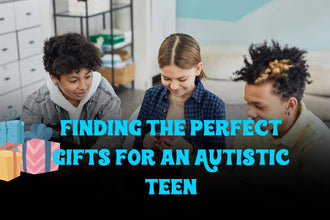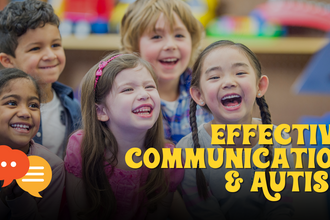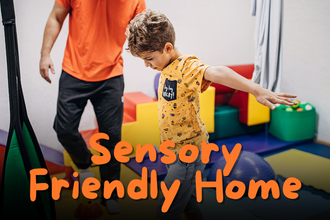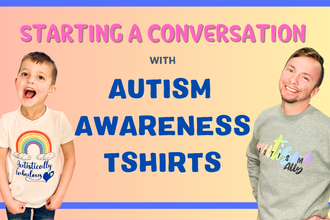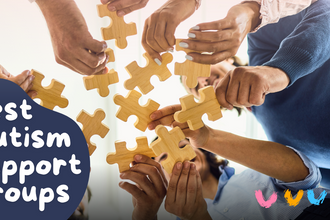
Having fun inside the house is important for kids who have autism. It helps them learn and feel calm. There are special activities to do that are just right for these kids. These activities help them think better and learn how to do things on their own. This blog will show you some of these fun activities that you can do at home to help your child be happy and learn new things.
Benefits of Indoor Activities
A. Promoting sensory exploration
Indoor activities provide a safe space for autistic children to explore their senses through stimulating experiences like touching different textures or listening to calming music. These activities help them regulate their sensory input and feel more comfortable in their environment.
B. Enhancing social skills
Engaging in indoor activities encourages interaction with peers and caregivers, promoting opportunities for practicing social skills such as turn-taking, sharing, and expressing emotions. Through these interactions, children learn valuable communication skills and build meaningful connections.
C. Promoting self-expression
Indoor activities spark imagination and creativity, allowing autistic children to express themselves in unique ways. Whether through art, storytelling, or imaginative play, they can freely explore their interests and talents, boosting their confidence and self-esteem.
D. Supporting cognitive development
Indoor activities stimulate cognitive abilities such as problem-solving, decision-making, and critical thinking. From puzzles and games to reading and cooking, these activities provide opportunities for learning new skills, expanding knowledge, and building cognitive strengths that lay a solid foundation for future learning endeavors.

The Best Indoor Activities
A. Reading Books
Reading books can be really fun for autistic kids if we make it comfortable and interesting for them. We can do this by creating a special reading space that feels nice and calm, without too much noise or bright lights. Then, when we read, we can use interactive ways to make it more exciting, like asking questions or acting out parts of the story.
It's also important to choose books that they like and understand. We should pick ones that match their interests and don't have too many complicated words. You can select from the top 10 autism books. This way, they'll be more likely to stay engaged and enjoy the story.

B. Arts and Crafts
Engaging children in arts and crafts activities offers a dynamic platform for self-expression and skill development. By providing a diverse range of art materials, from paints to clay, and encouraging exploration of textures, colors, and techniques, caregivers stimulate creativity and fine motor skills. It is important to find the right arts and crafts activity for your child as well.
Moreover, these activities boost confidence as children see their ideas come to life through their creations. The sensory-friendly aspect ensures that children with ASD can comfortably immerse themselves in the crafting process. Through this medium, children learn to express themselves uniquely, gaining a sense of accomplishment and pride in their abilities.

C. Sensory-Friendly Toys
Selecting toys that cater to different sensory experiences is vital for children with ASD. From textured balls that offer tactile stimulation to calming sensory toys that provide relaxation, these items promote sensory exploration in a controlled setting. Caregivers can curate a collection of toys that engage various senses, encouraging children to discover and interact with their environment.
By incorporating these toys into playtime, caregivers create opportunities for children to learn and develop while experiencing comfort and enjoyment. Sensory-friendly toys not only facilitate sensory integration but also contribute to overall well-being by providing avenues for self-soothing and exploration.

D. Structured Indoor Activities
Structured indoor activities are important for kids with Autism Spectrum Disorder (ASD). They help kids learn and feel comfortable. Setting up routines and spaces that are sensory-friendly is key. It's also good to do activities that match what each kid likes. Here are a couple of ideas:
- Sensory Corner: Create a special area with soft cushions, textured objects, and calming lights where kids can relax and explore.
- Daily Schedule: Follow a consistent routine for activities like meal times, play, and rest, giving kids a sense of predictability.
- Interest-Based Activities: Plan activities based on what each child enjoys, such as puzzles, drawing, or playing with specific toys.
These activities give kids a sense of what to expect, which helps them feel safe. Structured indoor activities help kids learn skills like talking, being social, and handling their senses better. They also reduce stress and make kids feel more at ease. You can find more ideas at “Engaging Activities for Supporting Your Autistic Child”.

IV. Tips for Successful Play
- Patience and Flexibility: Understanding and accommodating the unique needs of autistic children require patience and flexibility in approach. Being open to adjustments and allowing for breaks when needed fosters a positive play environment.
- Positive Reinforcement and Encouragement: Providing positive feedback and encouragement reinforce desired behaviors and boost confidence. Celebrating small achievements and milestones encourages continued participation and effort.
- Modifying Activities for Sensory Sensitivities: Adapting activities to minimize sensory overload ensures a comfortable and enjoyable experience for children with ASD. From adjusting lighting to providing noise-canceling headphones, simple modifications can make a significant difference in the child's comfort level.
- Collaborating with Therapists and Educators: Working closely with professionals enables parents and caregivers to access valuable support and guidance in implementing effective strategies. Therapists and educators can provide insights and recommendations tailored to the child's specific needs, enhancing the overall effectiveness of indoor activities.
V. Key Takeaway
Indoor activities offer a rich landscape for nurturing growth and development in autistic children. By embracing the benefits of these indoor activities, parents and caregivers can create inclusive and supportive environments that cater to the unique needs of their children. Let us continue to explore and adapt indoor activities that provide joy for children on the autism spectrum.
Become a part of Prideful on the Spectrum's community today where we spread awareness about the diverse spectrum of abilities in autistic individuals. Explore our carefully crafted toys and a clothing line that aims to celebrate differences and challenge stereotypes. Come and join hands in bringing a change- Explore now!


